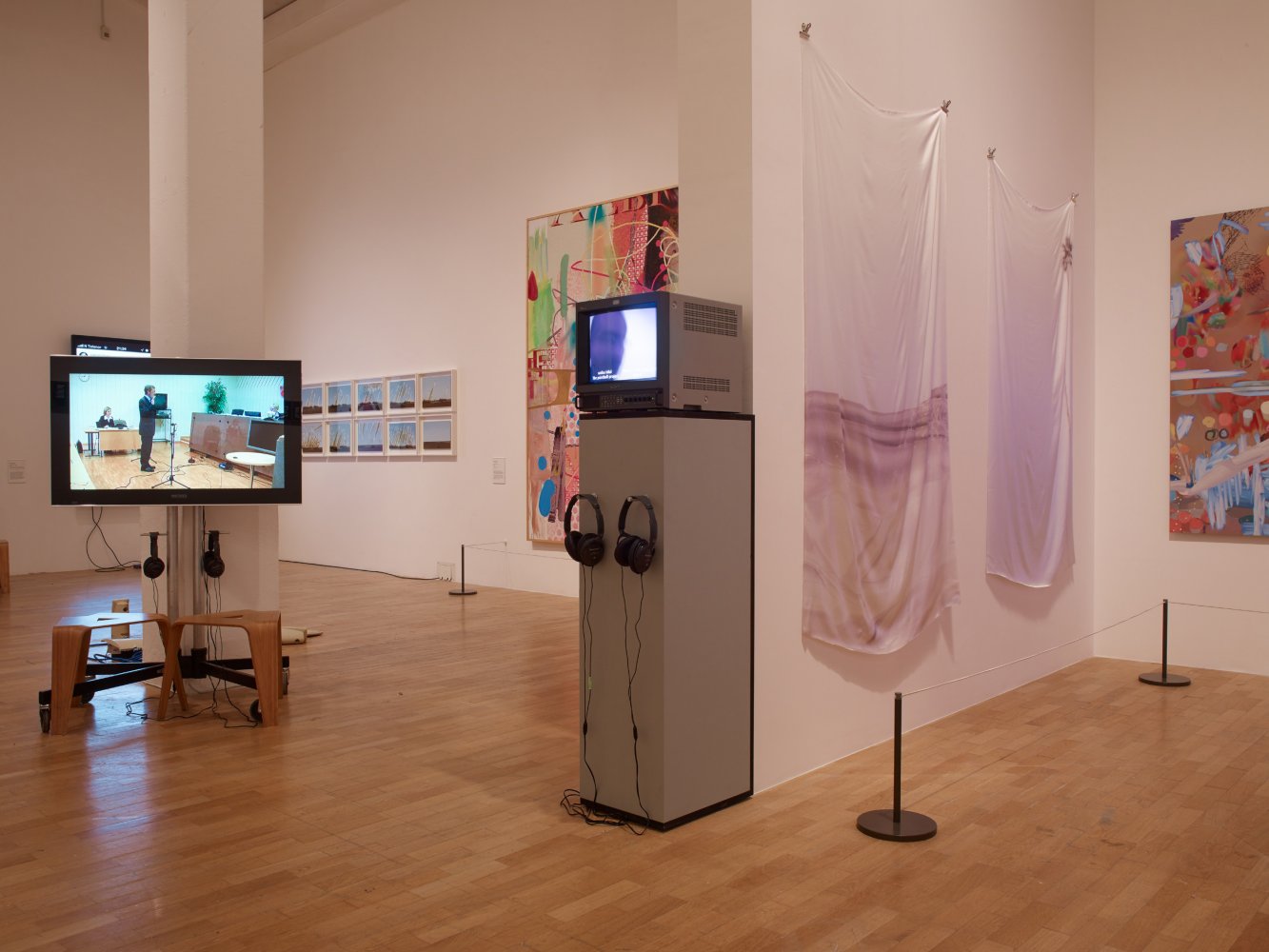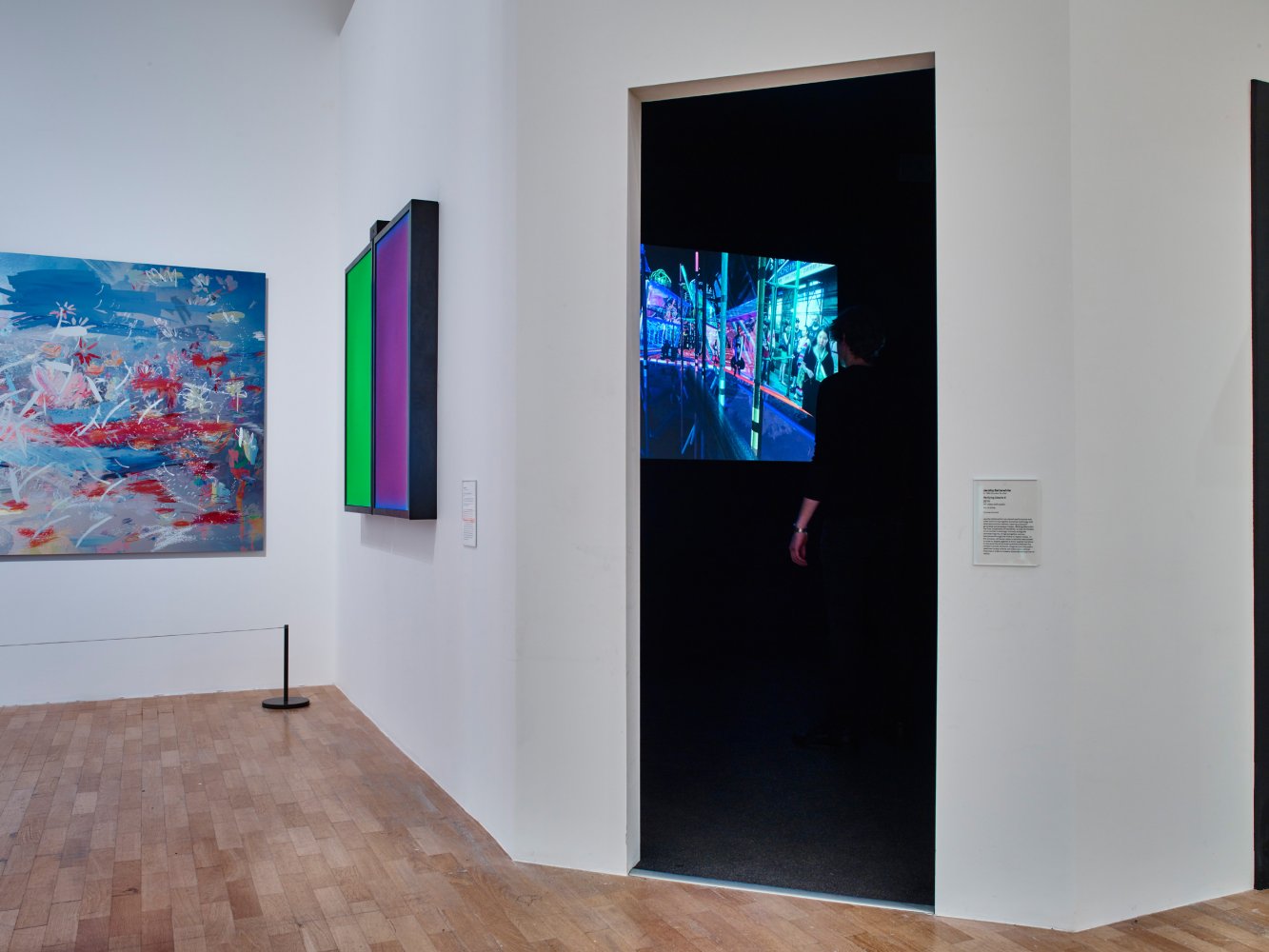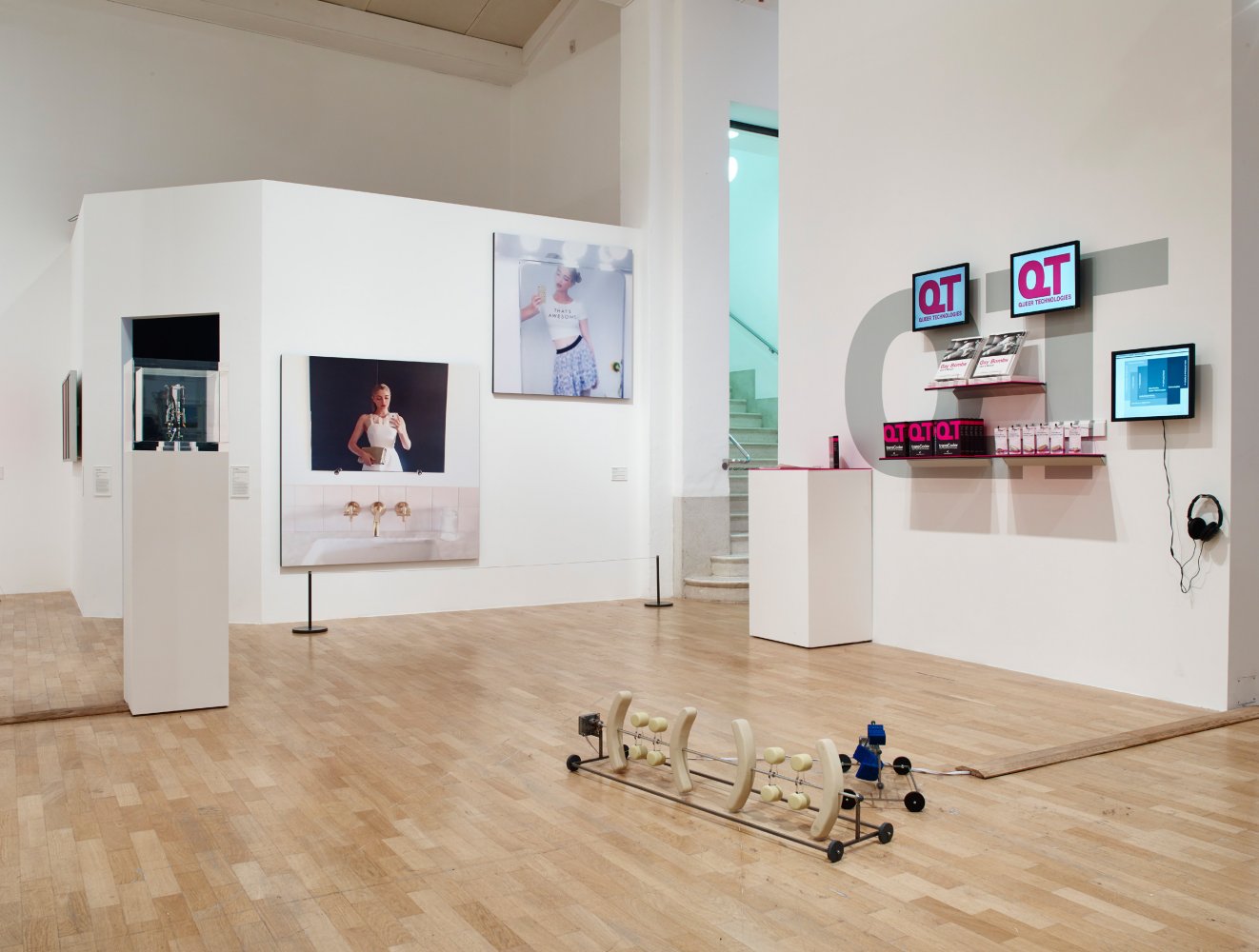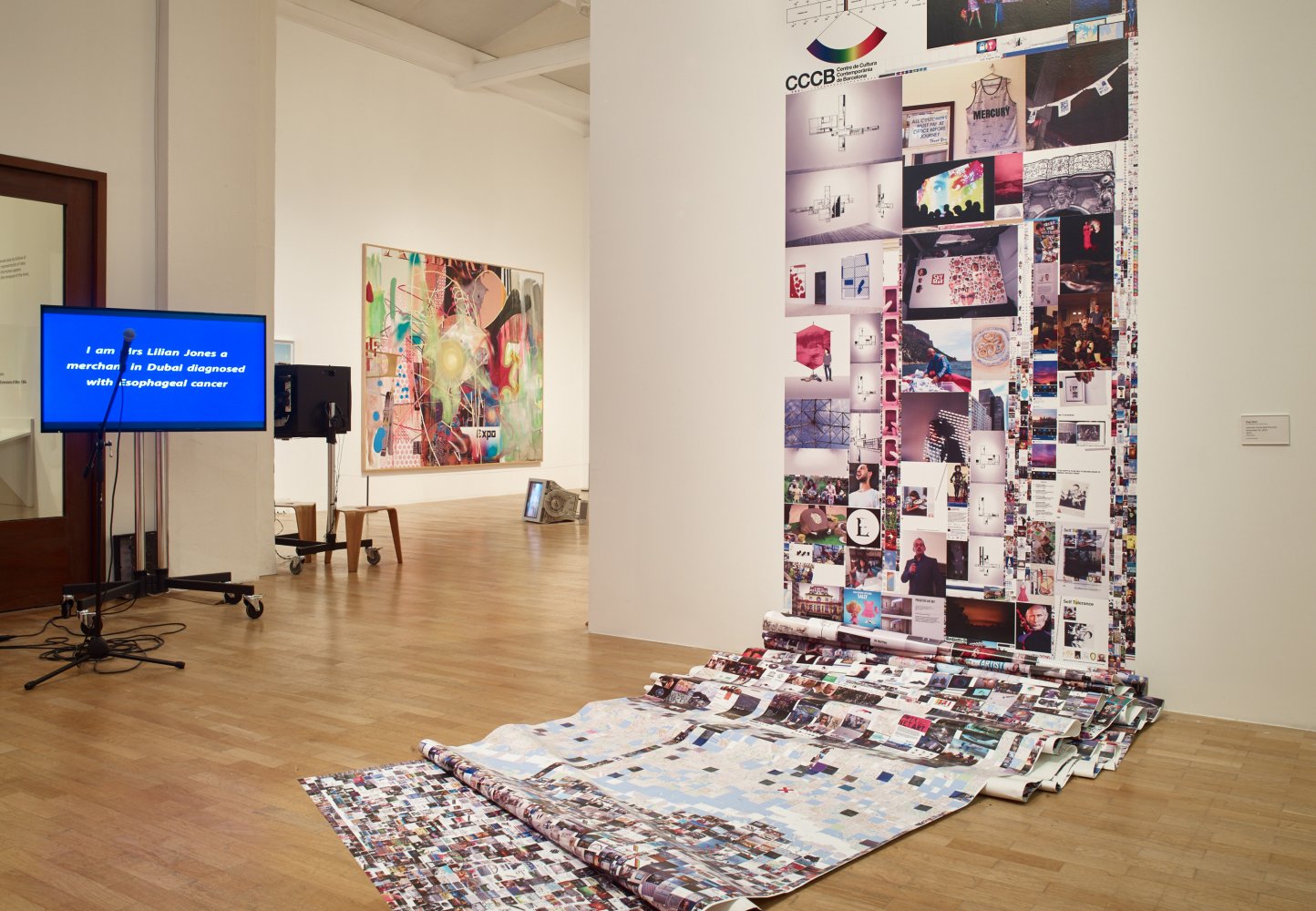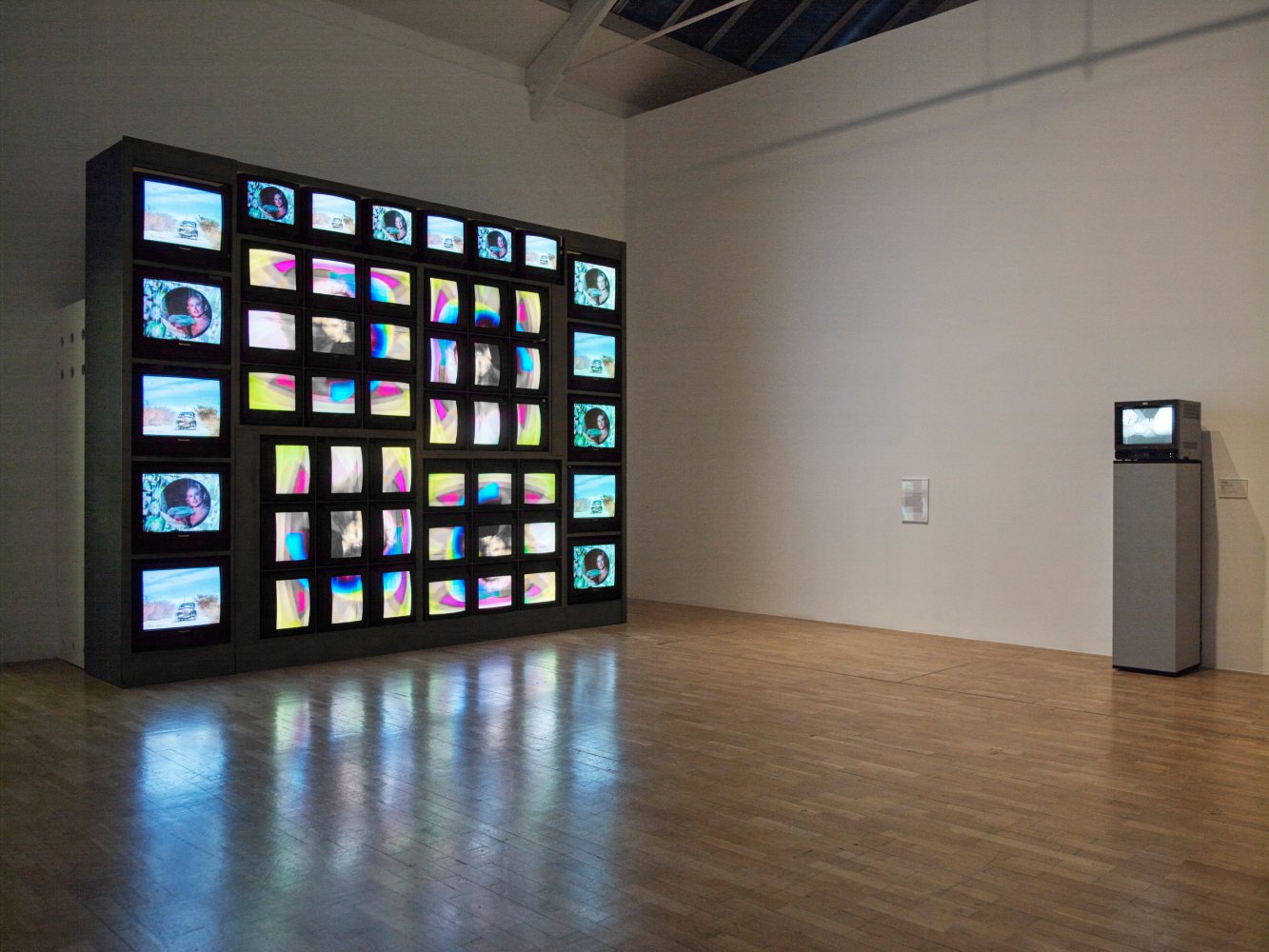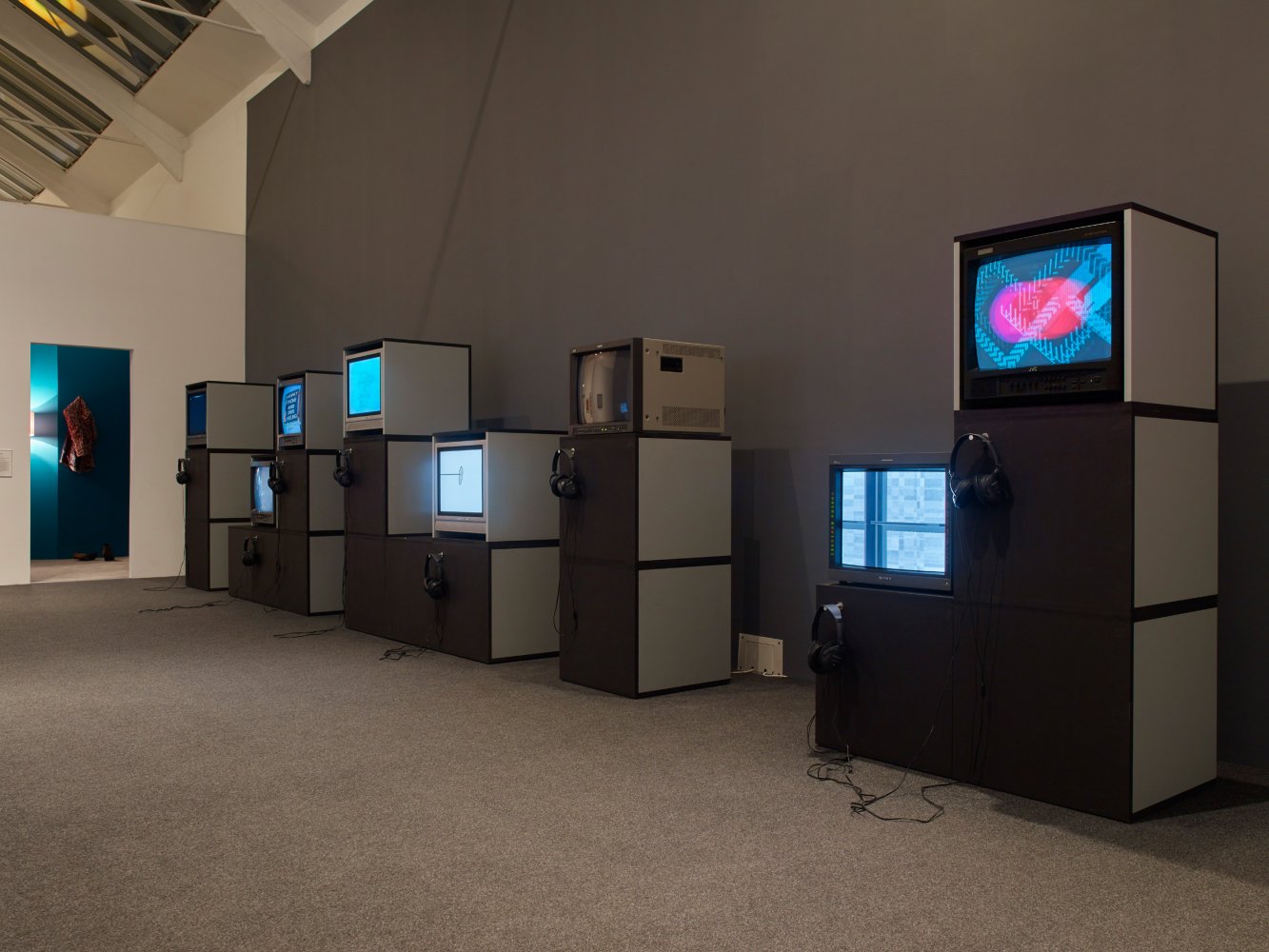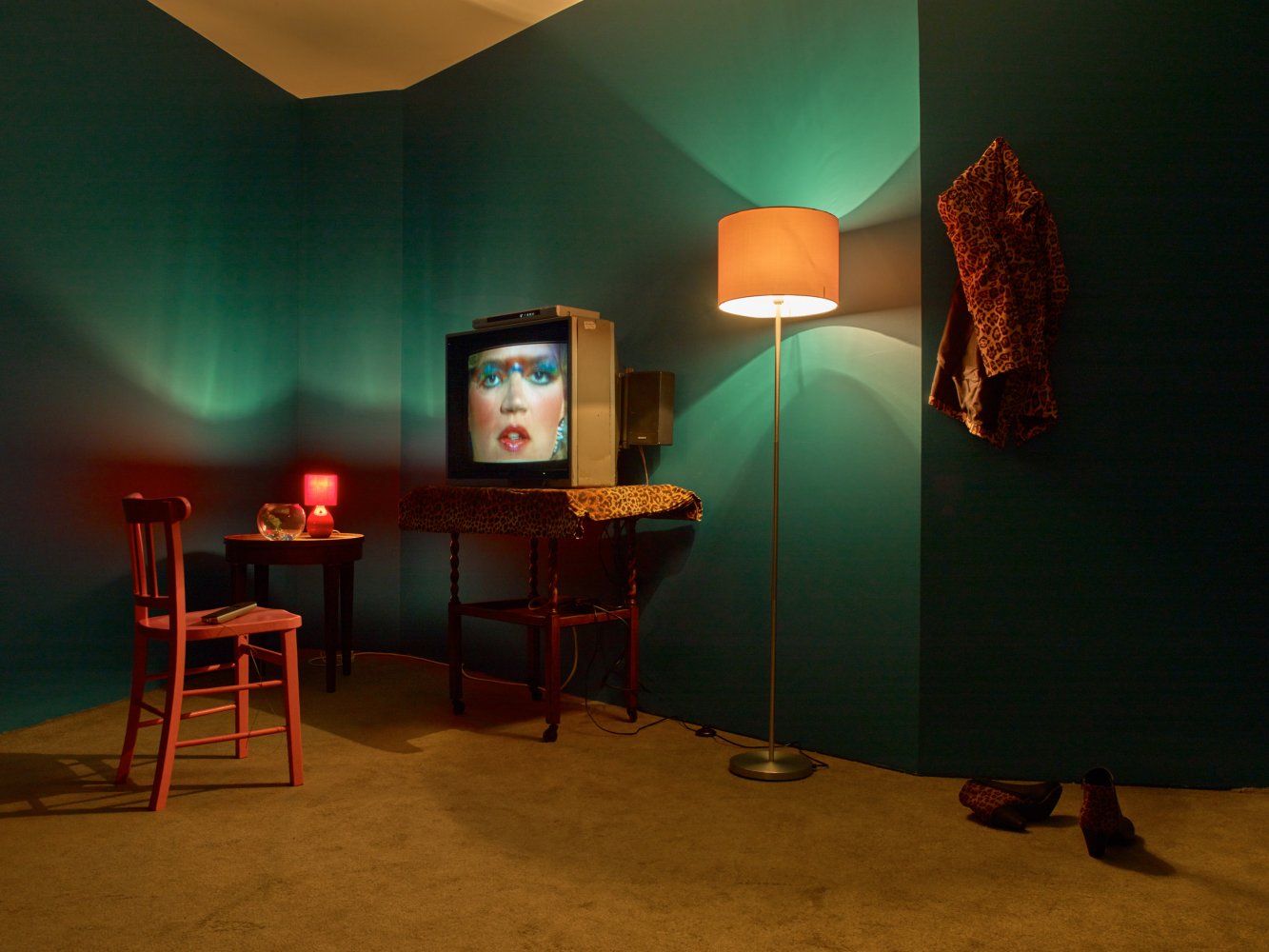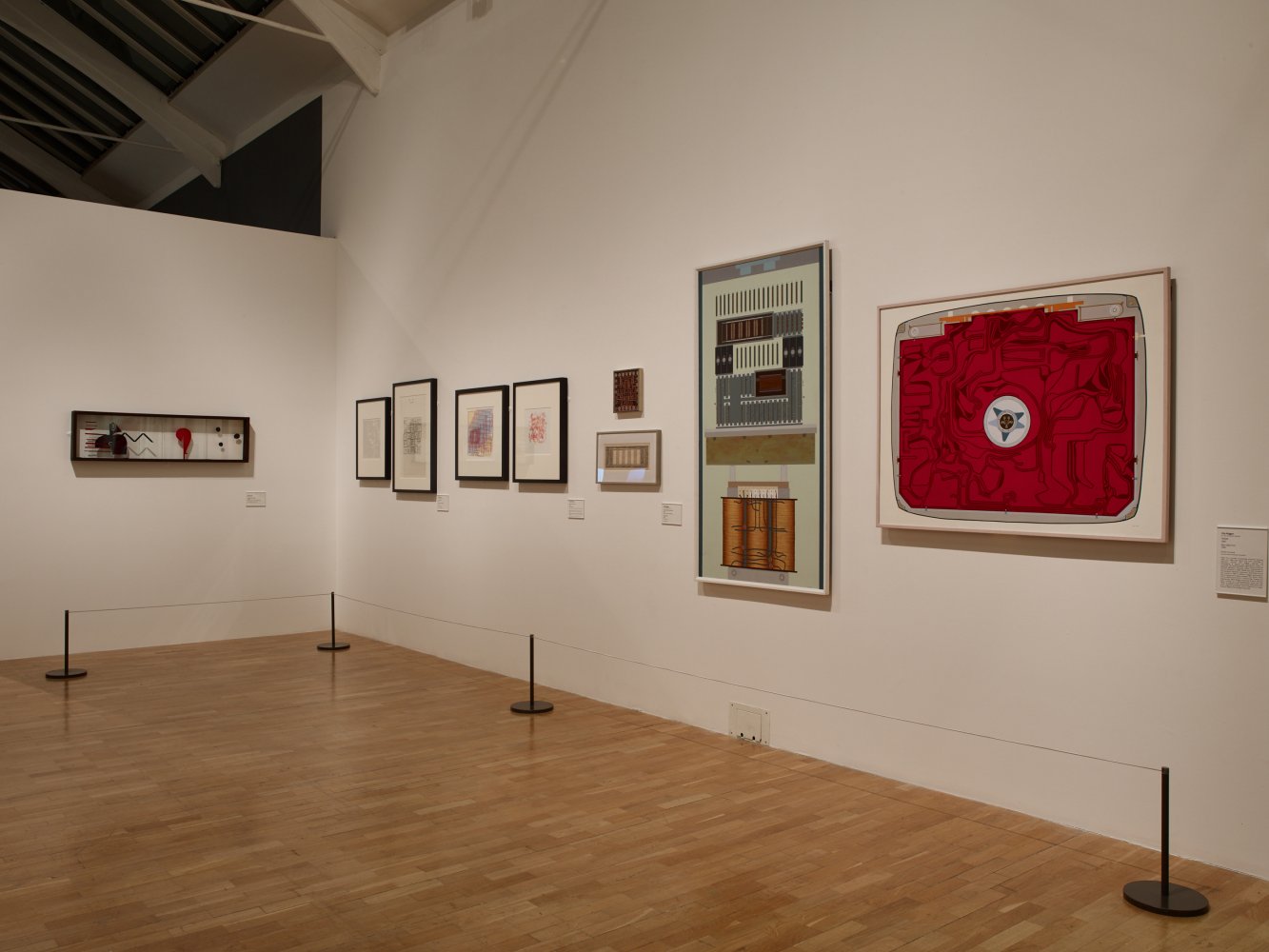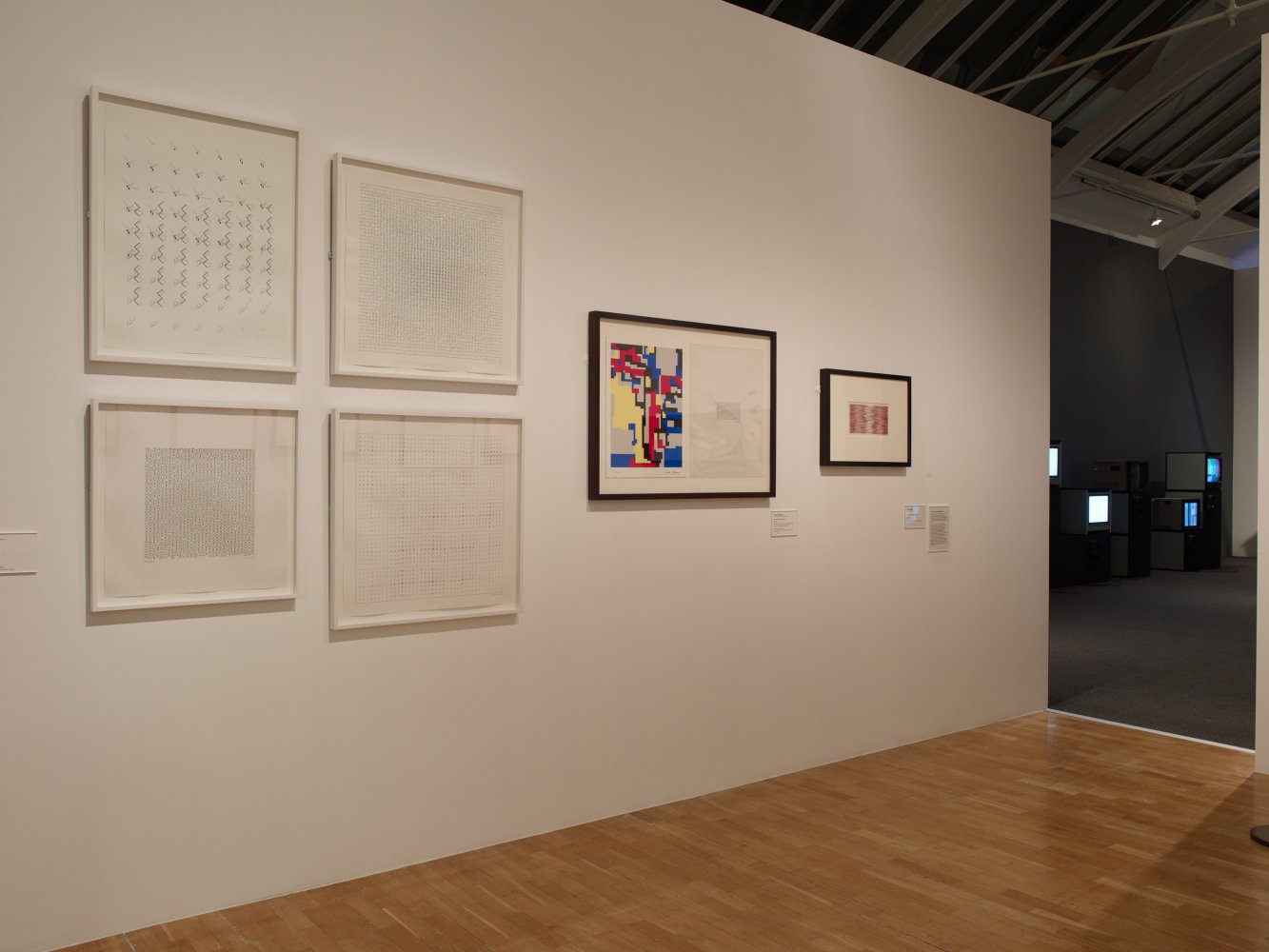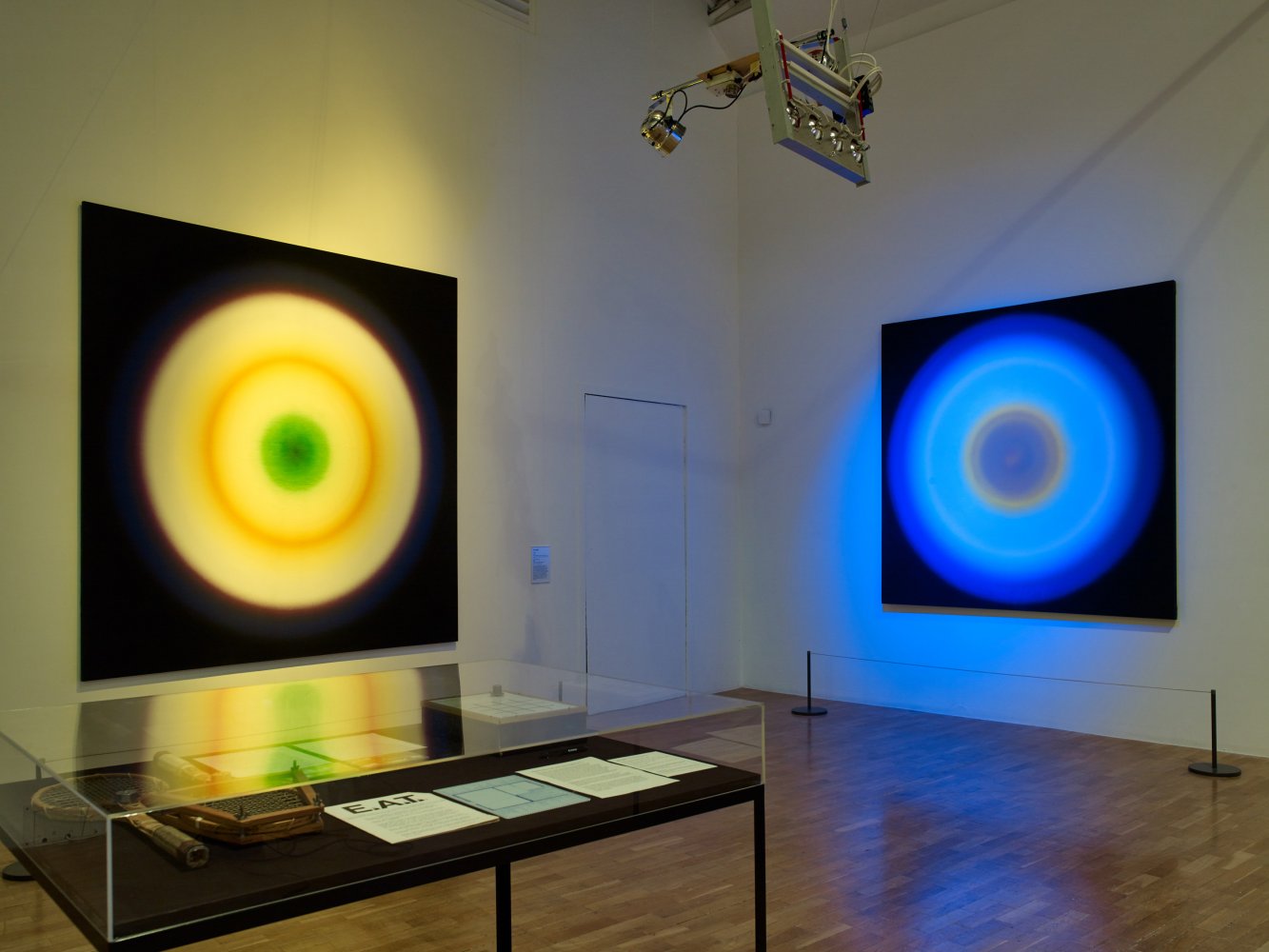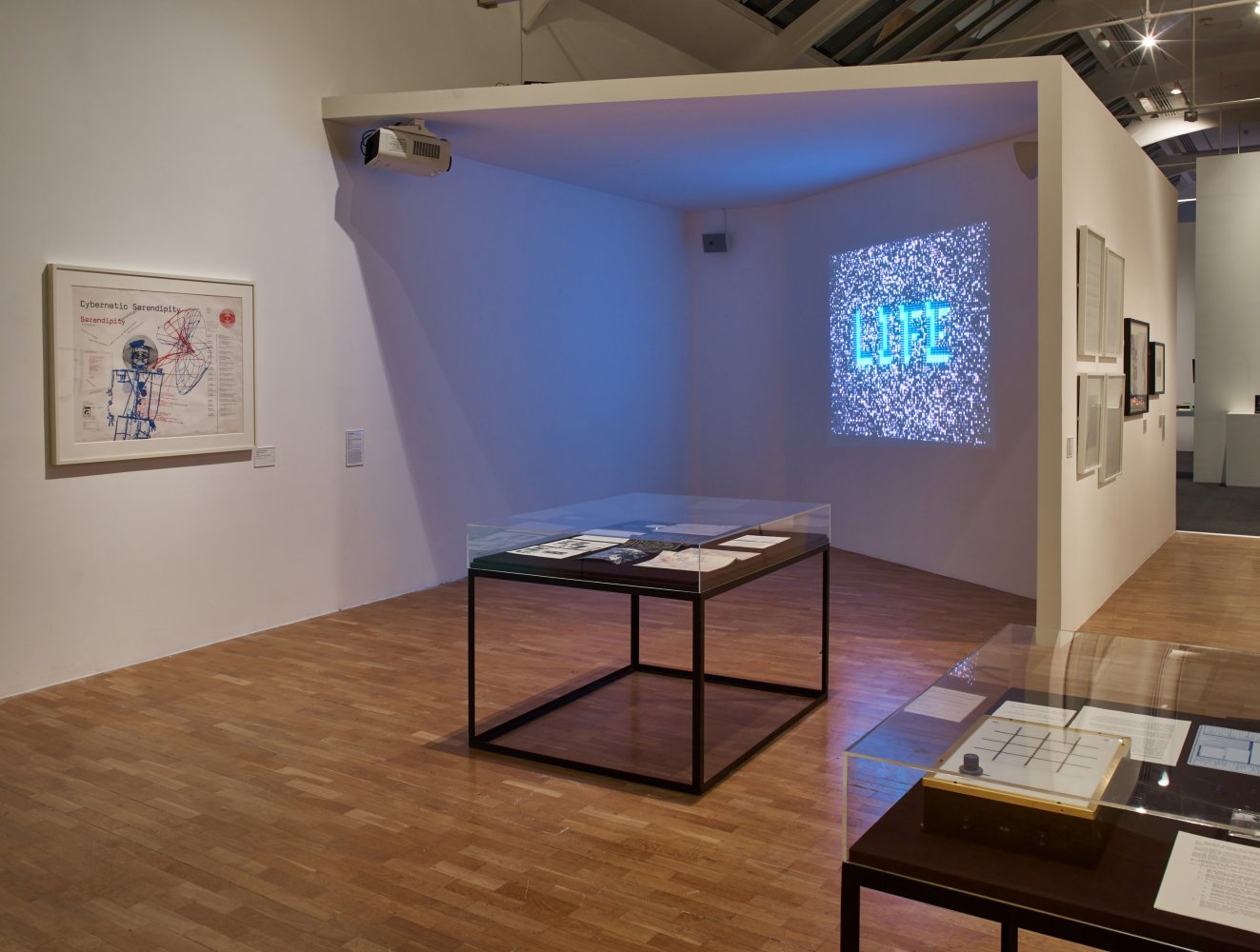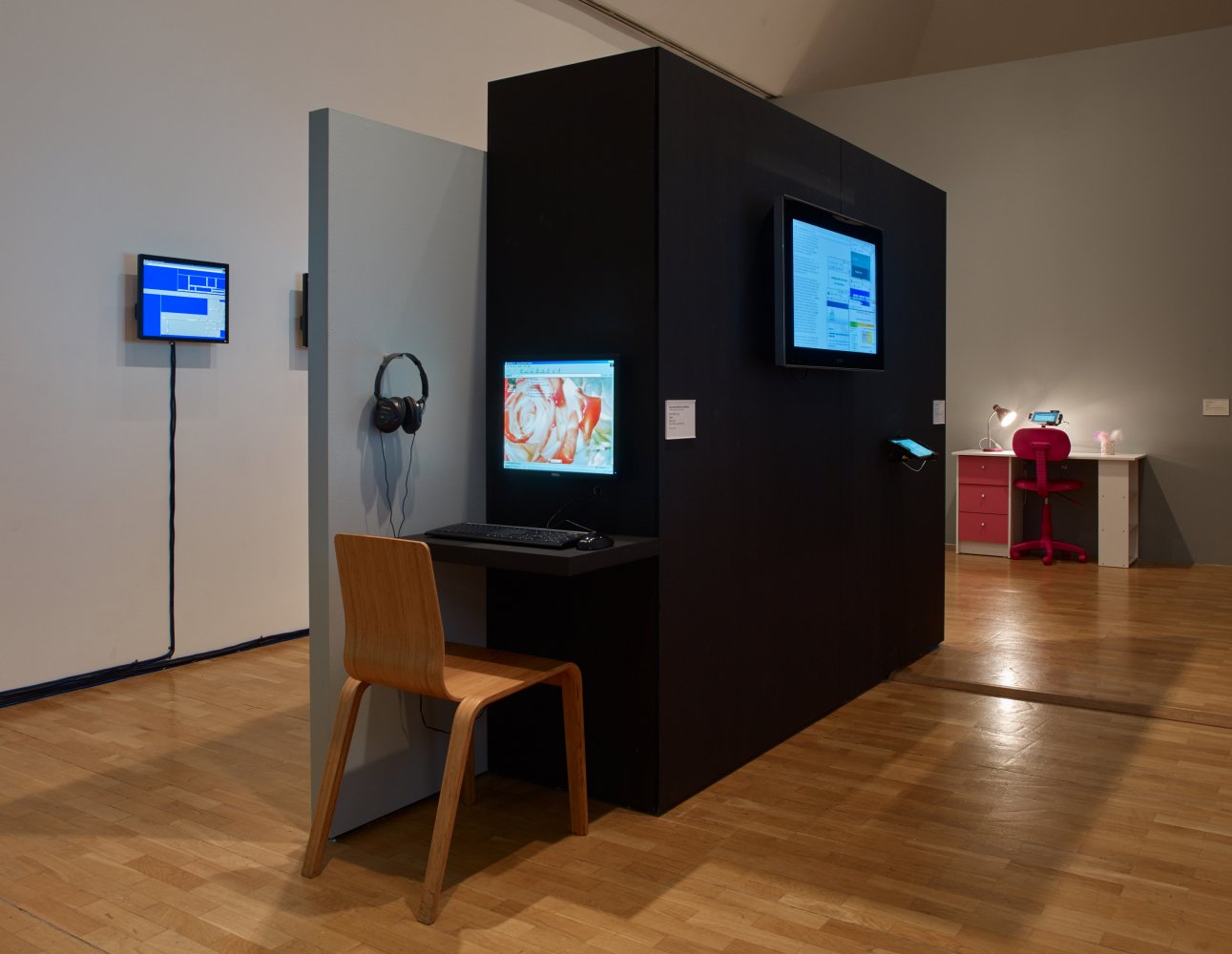In a bid to start 2016 with a big show, the Whitechapel gallery has put together a survey of over 100 artworks by more than 70 artists working with computer and internet technologies during the last 50 years. It’s called Electronic Superhighway (2016 – 1966), which sounds new and exciting, because it’s ‘about technology’. But the name also has a retro feel about it. Superhighway sounds a bit 70s. Indeed, the term was coined in 1974, by the artist Nam June Paik as a metaphor for the potentialities in a globalised world connected through technology. By choosing to name the show in such a way it allows the curators to situate today’s current state of affairs as one driven by technology, but also to situate the show historically, implying a previous state of affairs. This is made explicit in the exhibition layout, which splits the show into two distinct sections. Downstairs, where you enter the gallery, the work on show is from 2000 to 2016, and upstairs the work dates from 1966 to 1999.
This split between two states of affairs is one riven, simply, by the internet –not in relation to any specific point of origin, but in terms of the everyday colloquialism in which it is understood today. And herein lies the question that, for me, the exhibition poses. If this show is ‘about technology’ then are the technologies of the recent past homologous with today’s technologies? Or maybe even, what is technology?
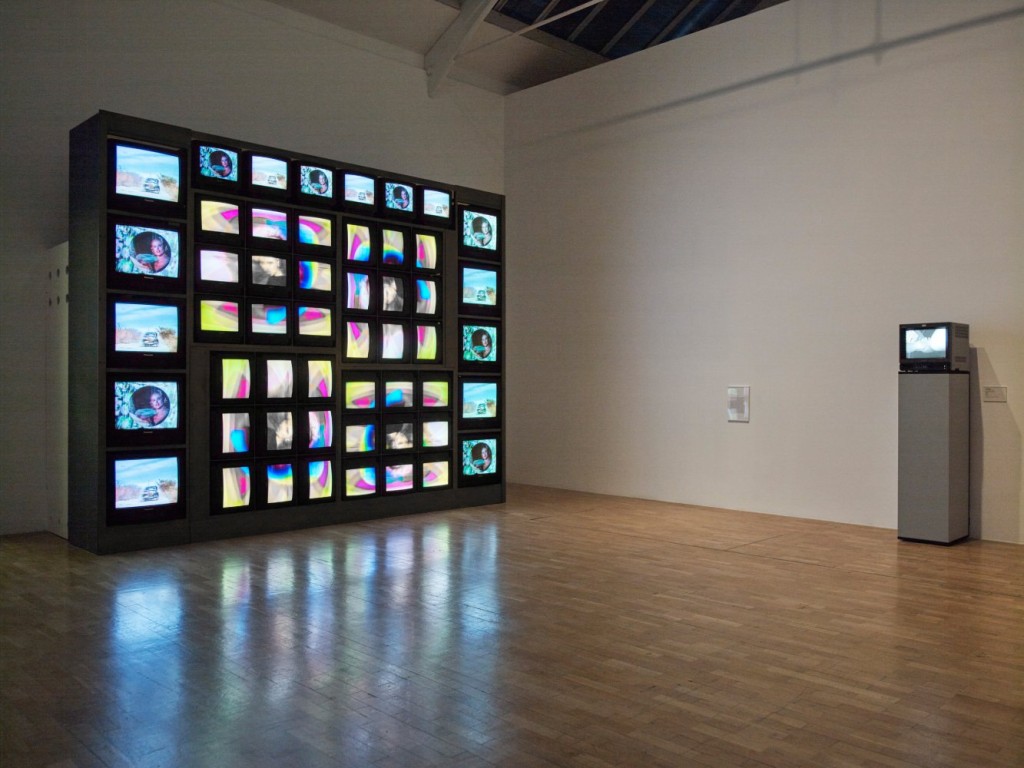
The exhibition is arranged in reverse chronological order, but I thought that I’d reverse this reverse, as it were, and start with the earlier work. Upstairs is carpeted and peaceful. There’s lots of work up here – Ulla Wiggen’s paintings of electronic circuits (1967), Vera Molnar’s computer drawings (1974), E.A.T’s modified objects for performance (1966), to name just a fraction but to also illustrate the diversity of material. There is plenty of moving image –video and early computer generated works.
In Judith Barry’s film ‘Space Invaders’ (1981-1982) a voice muses over a night sky “we don’t know what’s really out there, just more stars, I guess”. The film continues into scenes of discos and video arcade games. A boy lies on his bed watching TV, dreaming, while the word ‘escapism’ intercuts. Dreaming toward the TV is echoed in Lynn Hershman Leeson’s interactive installation ‘Lorna’ (1979-1982). The work is styled like a 1970s apartment. A TV on a dresser plays an interactive film of the agoraphobic Lorna trapped in her apartment with her own TV, the only channel to the world outside. Nam June Paik’s ‘Internet Dream’ (1994), is a large video wall sculpture consisting of 52 screens displaying snippets of broadcast and electronically processed images. Is this heavy machine dreaming of the internet; that maybe more screens can break the single channel-induced stupor?
Allan Kaprow’s ‘Hello’ (1969), documents experiments with closed circuit video systems, in which participants would communicate via the artist’s instructions when they see each other on the screen, and Rafael Lozano-Hemmer’s ‘Surface Tension’ (1992), where a huge eye tracks your movement around the room, both anticipate communication through the screen and surveillance systems.
With so many works on display it seems pointless, impossible even, to find particular threads or analogies to bind this work together, even though they have been grouped under the banner of technology. And also in a kind of ‘history zone’, which we may as well call ‘pre-internet’, because this is what the show suggests.
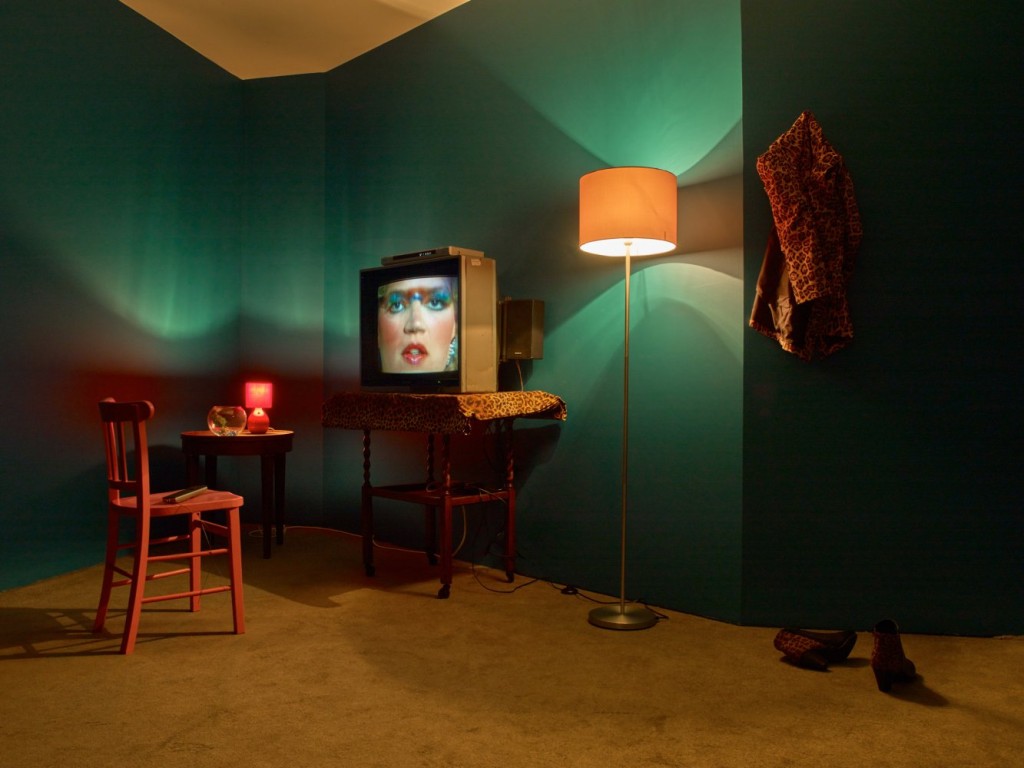
So in historicising these works into a group, I start to wonder. To think about technology as a category by which to group something seems to chime with present-day thinking. After a while it becomes difficult to understand what these works have in common. Perhaps nothing at all. Perhaps it doesn’t matter. Here, technology is understood as electric, computerised, modern and medium-oriented. The show itself starts to define the boundaries and parameters of technology.
Going back downstairs, back to where you enter the exhibition, you are in the present. It is bright and full of work. “What is it that makes the present so different?” asks Jayson Musson in ‘ART THOUGHTZ’ (2010-12), originally a show on YouTube, in which he endearingly greets his audience as ‘Internet’. “Well,” he continues, “it’s the internet”. Musson’s film, a compilation of all his previous shows, is full of humour and satire, but it strikes with resonance a needed simplicity with which we can regard the internet. Maybe the internet is better understood as a process and not something that can be represented. It’s more like a practice. “This is the best time for the Layman to get into performance art”, says Musson, half joking, “the performative nature of the ritual of the everyday.”
But what kinds of performance might we get into? Musson jokes about the mundane, but maybe it’s also something else, like taking the neoliberal subject of excessive self-governance, faux autonomy and pseudo flexibility, and warping them into something more heightened, intensified, performed, pleasured, ephemeral –something like a technology of the person. Something like the characters in Ryan Trecartin’s film ‘A Family Finds Entertainment’ (2004). Trecartin has stated about his films that he sees personality traits, behaviours, genders and identities as tools or applications rather than ways of existing: Tools that allow for a state of inventiveness and do not depend on labels.
So maybe this Superhighway is no longer electric but performative, with that category also being variable. Zach Blas’ ‘Queer Technologies’ (2007-2012), is a mixed-media installation that displays an array of consumer products –computer components, coding manuals and software operating systems –‘Queer tech’. On a screen a film speaks of ‘anti language’ and ‘Transborder immigrant tools’ – “walking equals true if you are born in the wrong place”, says the narrator. Here the highway need not be electric. This highway is about keeping moving, perhaps until you disappear out of sight completely, and escape.
Another kind of escape is echoed in Thomas Ruff’s ‘Substrat 34 1’ (2007), a chromogenic print that through technical process applied to found images abstracts the picture into a spectral play of colours that ripple into each other. The work has a fluid motion, edges that dissolve and also the feeling of detachment inherent in that there is only a notional connection to its founding body, the index image.

The ‘Net Art’ room shows works selected in collaboration with online organization Rhizome. Here, biographies are incorporated. In Ann Hirsch’s ‘Twelve’ (2013) as the artists chat room dialogues, and in Martine Syms’ ‘Reading Trayvon Martin’ (2013), an ongoing work that tracks Syms’ archiving and bookmarking of web pages relating to the case.
These notions of performativity, escape, modification and ephemerality suggest another way of thinking about technology, as any kind of tool or process between two states of affairs. So the technologies that are actually not electric –languages and orders of signification–seem to be the ones under scrutiny by the artists in the 2000-2016 part of this exhibition. The internet may be electric but the things now trying to be crashed and failed are not electrical systems but systems of information, representation and control.
I get the sense that the composition of this exhibition comes from viewing the previous state of affairs through the lens of today’s state of affairs –that in a time of digitally networked global computer systems, which are possibly beyond representation themselves, there is the overwhelming urge to call all electrical systems ‘technology’, but not apply the term to other systems and applications.
Maybe artists now don’t even see the internet as a technology, but just a commonplace. Artists have been working on the internet since its inception and continue to do so. How can the gallery represent what is actually happening online? It can’t. And that’s fine. The show was good, in the sense that if you didn’t know any of the artists before then you can go away and look them up –or do it in the gallery on your smartphone. **
Click arrow, top right, for installation photos.
